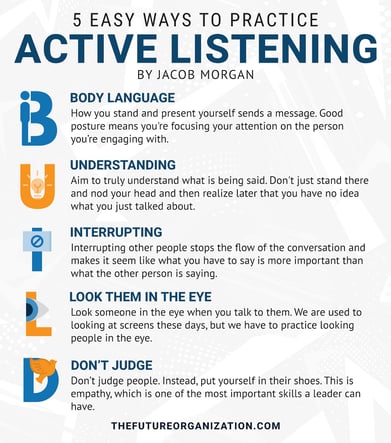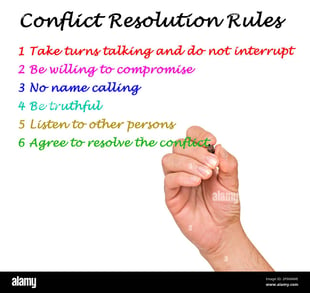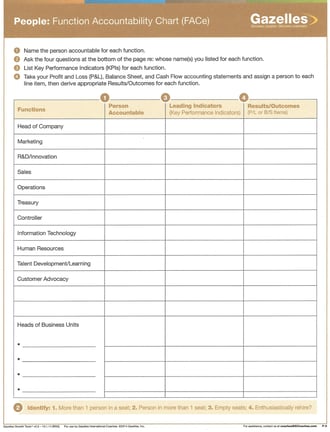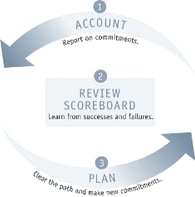 Office communication can be improved in several ways. I just returned from a Quarterly Planning Meeting where we took a full day to work through Patrick Lencioni’s Five Dysfunctions of a Team. The team enjoyed it, felt closer, set rules for conflicts, and built a theme to improve accountability! Odessa Powell contributed this article while I’m on vacation, sharing additional ideas on how to improve team communication.
Office communication can be improved in several ways. I just returned from a Quarterly Planning Meeting where we took a full day to work through Patrick Lencioni’s Five Dysfunctions of a Team. The team enjoyed it, felt closer, set rules for conflicts, and built a theme to improve accountability! Odessa Powell contributed this article while I’m on vacation, sharing additional ideas on how to improve team communication.
Communication is essential to a company’s success. Teams must work together effectively. Here are ten ways to improve employee communication during work hours.
#1 Teach Active Listening
 Teach your employees active listening. Active listening requires listening attentively to a speaker, understanding what they're saying, responding, and reflecting on what's being said, to retain the information for later.
Teach your employees active listening. Active listening requires listening attentively to a speaker, understanding what they're saying, responding, and reflecting on what's being said, to retain the information for later.
Active listening is essential to understand each other better and pay attention to each other’s needs. To be an active listener, put yourself in the other person’s shoes and understand their perspective while looking for solutions you can propose.
#2 Write a Communication Policy
Organize all your internal communication by writing a communication policy for your company. A communication policy documents how your employees should behave and communicate in specific situations.
 During critical situations, efficient communication helps your company manage a crisis correctly and respond quickly.
During critical situations, efficient communication helps your company manage a crisis correctly and respond quickly.
In our Five Dysfunctions Exercises with my customer on Monday last week, we developed rules of Engagement to communicate more effectively through conflict and follow rules for our meetings.
#3 Learn Each Other’s Communication Styles
There are different people working for you, so it’s necessary to understand who they are on an individual level. Different employees prefer different communication styles. When you learn all of them, it’s much easier to communicate, be efficient, and productive.
 Some employees prefer texting or emails while others love in-person instead. You can hire experienced writers by checking custom writing reviews at All Top Reviews and then task these writers to create email templates for your team. This way, members who prefer texting can still use emails easily by filling out the templates and sending them.
Some employees prefer texting or emails while others love in-person instead. You can hire experienced writers by checking custom writing reviews at All Top Reviews and then task these writers to create email templates for your team. This way, members who prefer texting can still use emails easily by filling out the templates and sending them.
#4 Establish Main Channels of Communication
Even though different employees prefer different communication channels, you still need to establish specific channels to prioritize communication inside your company.
If you need your teammates to be able to communicate quickly throughout the day, then texting or voice chatting will be more suitable than emails.
#5 Schedule Meetings in a Calendar
Scheduling is as much a part of communication as it is planning. Take care of these simultaneously. Every time you decide to have a meeting, schedule it in your team’s calendar so nobody forgets it.
 #6 Make Meetings Short and Efficient
#6 Make Meetings Short and Efficient
Speaking of meetings, always aim to make them as short and efficient as possible. Teams tend to waste time at long and frequent meetings because they get sidetracked all the time. It’s much better to select one or a few problems for a single meeting to deal with them efficiently.
Always come prepared for meetings.
#7 Exchange Feedback Regularly
Feedback is more important than you may think. It’s not only essential for your employees – it’s also necessary for you to improve.
You should provide feedback to your employees regularly and ask for their feedback in return.
Giving employees feedback disagrees with Marcus Buckingham’s Nine Lies About Work, Lie #5: People Need Feedback – Truth: People Need Attention. Consider this as well.
#8 Allocate Roles Correctly
 Because you have a team of different people working together, you need to make sure everyone contributes to group activities. Everyone needs to know what their role is. To ensure everyone knows their role, allocate them correctly. Each employee’s role should fit their expertise and experience.
Because you have a team of different people working together, you need to make sure everyone contributes to group activities. Everyone needs to know what their role is. To ensure everyone knows their role, allocate them correctly. Each employee’s role should fit their expertise and experience.
See 12 QUESTIONS to Take You From Good To Great - #1 & 2 and scroll to the Function Accountability Chart for a tool to identify functions for your business.
#9 Send Recaps and Updates
Send recaps and updates to your employees to ensure everyone is updated with news or updates on meetings and projects. If someone is absent from a meeting or event, you’ll be certain they know what occurred. This reduces miscommunication.
Metronome Growth Systems is the tool we used with our customers to ensure agendas are simple, and each participant's meeting notes are recorded.
#10 Allow Employees to Interact Spontaneously
Let your employees interact with each other. Some managers might frown on spontaneous conversations between employees. In these two articles: Why Leaders Should Encourage Socializing In The Workplace, Gossip isn't always bad: Idle talk brings employees close together and makes them more cooperative, study finds suggest these conversations build teamwork. Let your team build relationships to build trust and grow closer together.
To create an environment where everyone is inspired to give their best, contact Positioning Systems today to schedule a free exploratory meeting.
Growth demands Strategic Discipline.
Arlene Dickinson, Dragons' Den (Canada’s version of Shark Tank) shared two reasons people do business with us, and 4 things leaders need to share with their team. We’ll share her insights from Metronome’s Tip Top Business Growth Summit 2023 in our next blog.
Building an enduring great organization requires disciplined people, disciplined thought, disciplined action, superior results, producing a distinctive impact on the world.
Discipline sustains momentum, over a long period of time, laying the foundations for lasting endurance.
 A winning habit starts with 3 Strategic Disciplines: Priority, Metrics, and Meeting Rhythms. Forecasting, accountability, individual, and team performance improve dramatically.
A winning habit starts with 3 Strategic Disciplines: Priority, Metrics, and Meeting Rhythms. Forecasting, accountability, individual, and team performance improve dramatically.
Meeting Rhythms achieve a disciplined focus on performance metrics to drive growth.
Let Positioning Systems help your business achieve these outcomes on the Four most Important Decisions your business faces:
| DECISION |
RESULT/OUTCOME |
| PEOPLE |
|
| STRATEGY |
|
| EXECUTION |
|
| CASH |
|
Positioning Systems helps mid-sized ($5M - $500M+) businesses Scale-UP. We align your business to focus on Your One Thing! Contact dwick@positioningsystems.com to Scale Up your business! Take our Four Decisions Needs Assessment to discover how your business measures against other Scaled Up companies. We’ll contact you.
NEXT BLOG – Arlene Dickinson – Four Messages Leaders Need to Share with Their Team - Metronome’s Tip Top Summit 2023






.jpeg?width=150&height=135&name=Hand%20with%20marker%20writing%20the%20question%20Whats%20Next_%20(1).jpeg)

